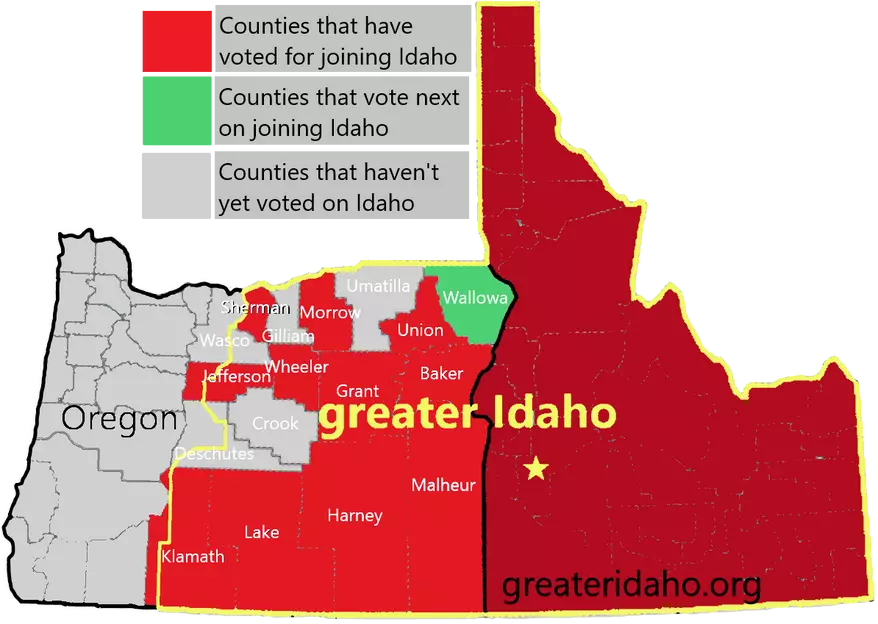In a bold move reflecting deep political divisions, thirteen counties in Oregon have voted in favor of initiating negotiations to secede from the state and join conservative Idaho. This significant development highlights growing frustration among residents of these counties with Oregon’s liberal policies.
On Tuesday, Crook County became the latest to approve the ‘Greater Idaho Measure,’ a proposal aiming to shift the Oregon border 200 miles westward. If successful, this change would bring 14 counties and several partial counties under Idaho’s jurisdiction.
Despite being heavily outspent by Portland opposition, tonight Crook County became the 13th county in eastern Oregon to vote for Greater Idaho. It's time for the Governor and Oregon Legislature to listen to the people and begin border talks. https://t.co/6FuQVuTIrc…
— the Greater Idaho movement (@GreaterIdaho) May 22, 2024
Supporters of the Greater Idaho movement argue that the progressive policies of Oregon’s state government have alienated residents in the eastern part of the state. They point to rising crime rates and what they see as ineffective governance as key reasons for their push to join Idaho. The movement advocates believe that relocating to Idaho would result in lower taxes and better representation for their communities.
Organizers of the Greater Idaho initiative assert that moving the state line would significantly benefit residents who feel overlooked by Oregon’s political landscape. They argue that Idaho’s conservative governance would align more closely with their values and needs.
The approval in Crook County adds momentum to the secession movement, which has steadily gained support in various counties. This push for realignment comes at a time when many Americans are questioning the effectiveness of state and local governments, particularly in areas with stark political divides.
This unprecedented campaign raises questions about the future of state borders and governance. The Greater Idaho movement’s success could set a precedent for other regions feeling misrepresented or dissatisfied with their current state governments.
As the negotiations begin, all eyes will be on Oregon and Idaho to see how they respond to this growing demand for secession. This development also raises the question: could California be next in line for such a movement?


